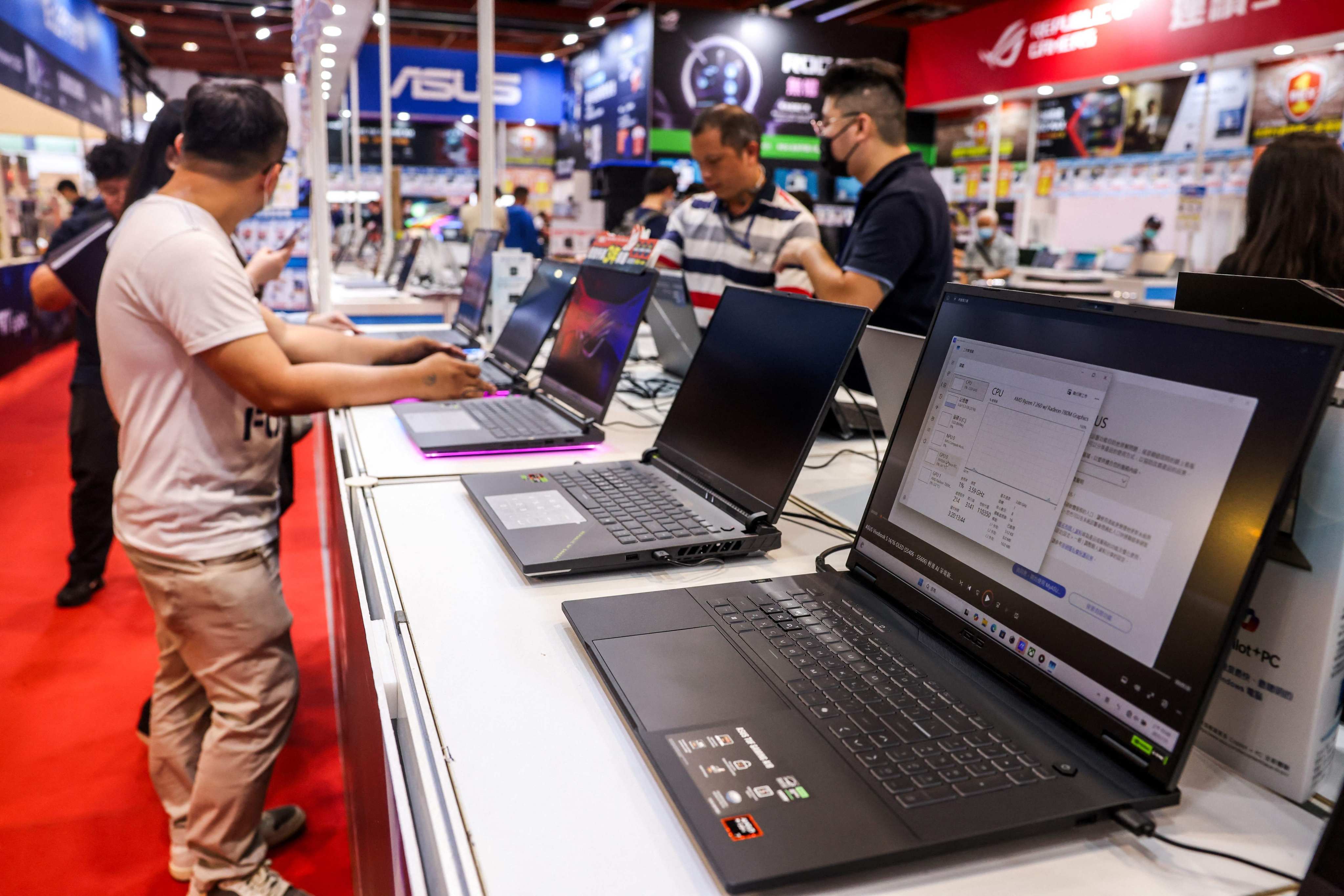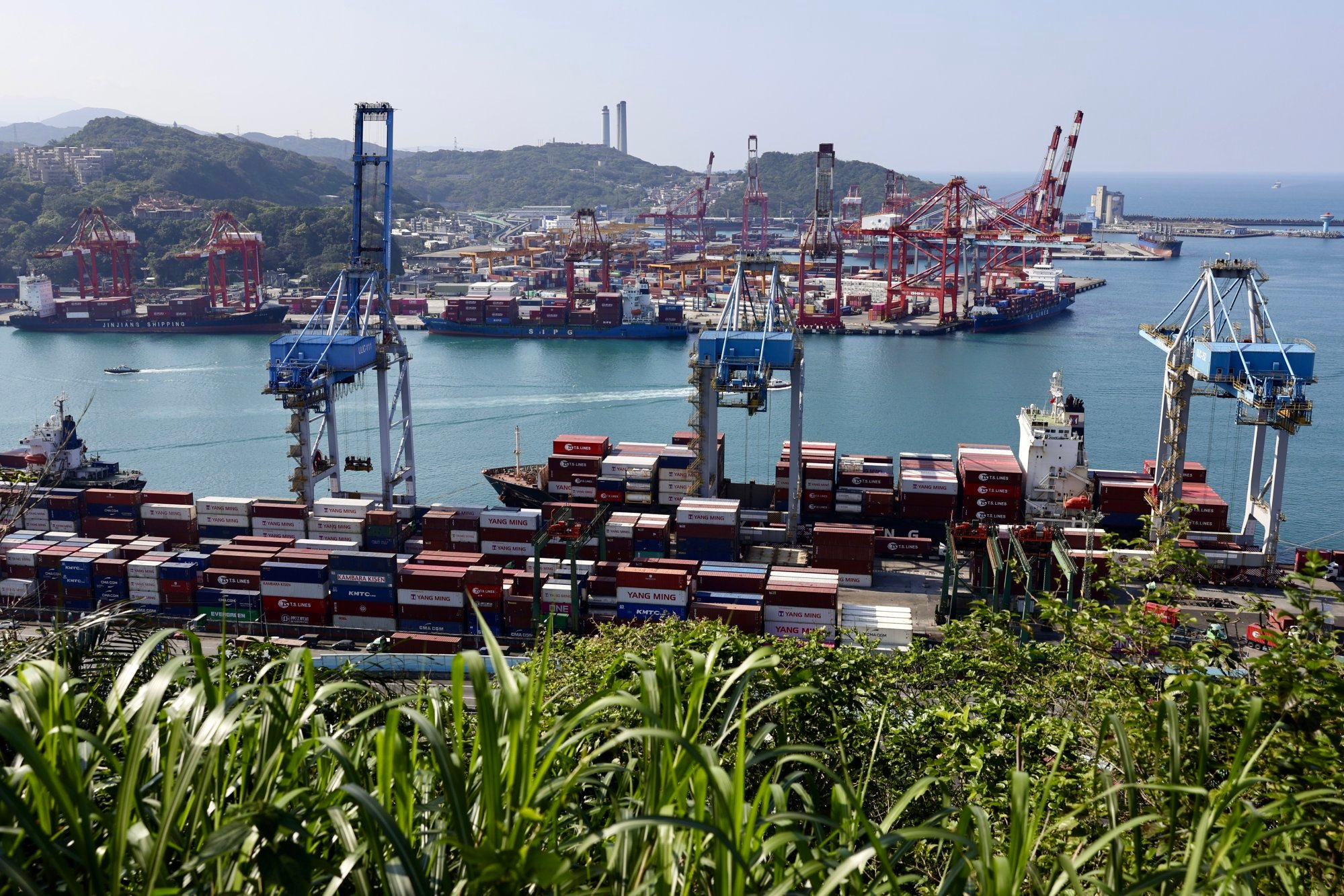Deal or no deal with US? Taiwan avoids tariffs so far, but remains on edge
Taiwanese, US officials have been meeting, suggesting, analysts say, they are trying to reach deal

When a 90-day tariff-free grace period expired this month, Taiwan escaped letters US President Donald Trump to two dozen other governments fixing new rates, including a 25 per cent duty on goods from Japan and South Korea.
Is Taiwan’s letter still in the mail?
The Trump administration announced worldwide tariffs on April 2, including double-digit rates for a list of exporters in Asia and 32 per cent slated for Taiwan. The US later paused most tariffs, including Taiwan’s, for 90 days to negotiate the tariff rates with major trading partners.
Taiwanese and US officials have met three times since April, including for a round of talks this month, suggesting that both sides are trying to work something out, the analysts said.
Like Japan and South Korea, fellow Asian exporter Taiwan has a substantial trade surplus with the US – the reason behind Trump’s push for higher tariffs.
However, analysts said this week that the absence of a Taiwan letter so far means the two sides are still negotiating toward keeping new US tariffs at a manageable level for Taiwan, which supplies advanced semiconductors for a who’s who of American tech firms.
“Reciprocal tariffs are now a lesser concern for Taiwan,” Singapore-based DBS Group Research said in an email to reporters on Friday.
“Right now they are still in the last round of the negotiations because they are trying to finalise the agreement,” said Chen Yi-fan, an assistant professor of diplomacy and international relations at Tamkang University in Taiwan.
The two sides are stuck on tariff rates for the automotive trade and US exports of agricultural goods but will reach an accord by August 1, according to Chen, who said he based his prediction partly on conversations with contacts close to the US government.
Negotiators from the two sides “tried to consolidate a consensus” on “multiple key issues” on July 8 and exchanged views on what to do next, the cabinet in Taipei said in a statement last week.

As of May, the talks had broadened to non-tariff issues such as other trade barriers and “economic security,” Taiwan Vice-Premier Cheng Li-Chun said in a statement. Economic security usually refers to each side’s overall strength in the face of external competition or supply chain issues.
“Taiwan has demonstrated goodwill and strategic alignment with the United States in several key areas including increasing our investments in semiconductor manufacturing,” Darson Chiu, CEO of the Confederation of Asia-Pacific Chambers of Commerce and Industry in Taiwan, said.
Unhandled type: inline-plus-widget {“type”:”inline-plus-widget”}
“These steps reflect Taiwan’s continued efforts to strengthen economic ties and minimise potential trade frictions,” he said.
US imports of goods from Taiwan totalled US$116.3 billion last year, up 32.5 per cent over 2023 and representing the majority of the US$158.6 billion 2024 overall bilateral trade figure, according to the Office of the US Trade Representative’s website. Taiwan’s surplus grew by 54.6 per cent last year over 2023.
The initial 32 per cent tariff rate surprised many in Taiwan because Taiwan Semiconductor Manufacturing Company, the island’s bellwether tech firm and the biggest contract chipmaker worldwide, had announced a US$100 billion semiconductor manufacturing investment in the US state of Arizona and won personal accolades from Trump.
TSMC supplies chips to iconic American consumer technology firms such as Apple and Nvidia.
Further responding to Trump, Taiwan leader William Lai pledged earlier this year a hike in defence spending to more than 3 per cent of Taiwan’s gross domestic product.
Mainland China claims Taiwan as part of its territory, to be reunited by force if necessary. Most countries, including the US, do not recognise Taiwan as an independent state, but Washington is opposed to any attempt to take the self-governed island by force and is committed to supplying it with weapons.
“Taiwan stands out as an overseas economic entity that the US must invest in more proactively” to reduce economic dependence on mainland China, said Ken Wu, president of the Formosan Association for Public Affairs advocacy group’s Los Angeles chapter.
TSMC and defence aside, Trump thinks he can still get more from Taiwan through tariffs, given the US market size and expectations in Taiwan that the US will help it militarily, said Liang Kuo-yuan, retired president of the Polaris Research Institute economics think tank in Taipei.
“Trump, with his businessman spirit, thinks he can get something more,” Liang said. “It’s not really equal. Taiwan needs the US for its defence reliance.”
Taiwan and the US, under Trump, have quit talking about a trade agreement that was expected to cover labour and the environment, a deputy trade representative from Taipei said in March.
Former US President Joe Biden’s administration launched those talks under what the two sides called the US-Taiwan Initiative on 21st Century Trade, and in 2023 the two sides clinched their first agreement under the initiative.
Small to mid-sized tech firms in Taiwan would struggle if the US went ahead with a tariff of around 30 per cent, likely to be split between exporters and importers with possible pass-through costs to consumers, analysts said.
However, those companies would probably still sell to the US market because of its size, Chen said.
If the semiconductor tariff were to extend to a broad range of information and communication technology products, “it would present a major challenge”, the DBS research note said.